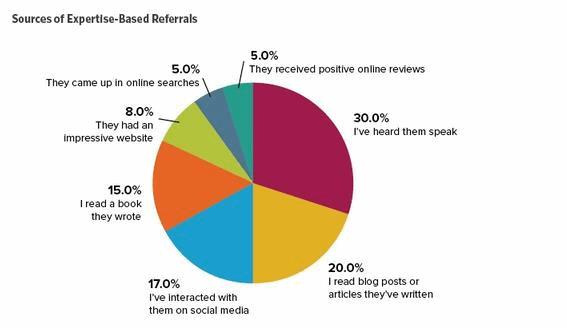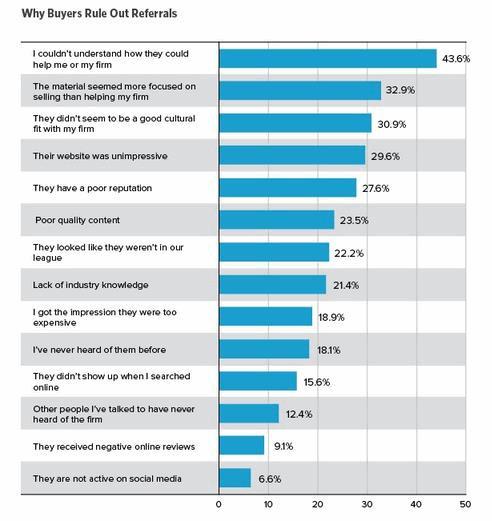Can Being A Thought Leader Drive Sales?
A conversation with Elizabeth Harr, Partner at Hinge

Operating as a VAR or MSP is inherently unique, bringing with it an unconventional set of challenges. One of those challenges is positioning yourself as a trusted advisor.
Elizabeth Harr, an accomplished entrepreneur and experienced executive who heads the technology services team at Hinge, took time to speak with The Business Solutions Network about how to position yourself as a thought leader in the industry and positively impact your company’s growth.
Q: Why do you believe visible expertise matters when it comes to a company’s reputation?
Harr: Thought leadership, simply put, demonstrates expertise. When owners and executives are promoting and demonstrate their expertise, they are marketing their companies in a way that is directly relevant to the decision making process for buyers of services (vs. buyers of a retail product for example).
Our research shows expertise is the top criteria buyers use when selecting a firm, and that makes sense. Today’s professional services environment is very crowded — so much so that even if we are different from our competitors the rest of the world doesn’t see it that way and they, the buyers, tend to see us all as offering a commoditized set of services. So, it’s become more difficult to differentiate around processes, methodologies, and the like.
If your company does have a different process or methodology, buyers aren’t always educated to the extent they understand the value of your differentiated process or methodology. But expertise is something they understand because it directly ports to an ability to solve the problem. Companies that position themselves around their expertise, and use thought leadership to promote and demonstrate that expertise, are making the case in the eyes of the buyer that they are the company that can solve the problem and therefore are the company the buyer should select.
Putting the human element aside for a moment, there is another very good reason companies should position themselves as thought leaders. Thought leadership, in the form of content, drives digital visibility. The algorithms behind the search engines look for frequently updated, long form, keyword optimized content — and nothing lends itself to checking those three boxes like thought leadership content. The more frequently companies produce well-written thought leadership, the more visible they are in the eyes of the search engines, boosting visibility to the right audience.
Q: As companies position their leaders as experts, what marketing techniques have the greatest impact?
Harr: First, just a simple definition. A marketing technique is anything you do to bring in new business or increase your company’s visibility and reputation. We’re not talking about strategies for closing sales once you have the opportunity — marketing techniques are all about generating those opportunities in the first place. These are methods for targeting promising markets, building your brand, and generating and nurturing leads to drive faster growth and higher profits.
There are many different marketing techniques both online and offline. Major offline examples include trade shows, networking, and in-person speaking engagements. Key online techniques include a firm’s website, ongoing search engine optimization efforts, and industry webinars.
Taken together, online and offline marketing techniques allow you to reach prospect clients wherever they may be. Traditional, offline networking has been an important part of the professional services industry for some time, but these days crucial relationships are forged more and more often through digital means.
Given that backdrop, here are the set of techniques that have the greatest impact on visibility:
- Your company’s website: Eight out of 10 times, this it the first place prospective customers get to know you. Make sure it has, at minimum:
- a dedicated section for thought leadership (i.e. a Resources or Insights Section)
- bio pages for SMEs/key leadership who author thought leadership that not only describe background, but also showcase expertise (links to authored thought leadership, speaking events, and the like)
- well-researched keywords embedded on and throughout each appropriate page of your website, as well as incorporated into the body of thought leadership
- messaging that makes it abundantly clear what you do, whom you do it for, and why you’re different
- Blogs and articles: There are two sides to blogging: maintaining your own company’s blog, and blogging on other people’s sites. The same goes for articles which you might write for your own company’s publications or outside industry publications.
Blogs and articles are platforms through which you can project your company’s particular expertise, way of thinking, and problem-solving acumen. By educating your audiences, you demonstrate your relevance to them and show them your qualifications as an expert.
There is also a second key benefit to blogging. It is an excellent way to increase the drawing power of your website. The search engines look for fresh content on your website. They also highly value content that is linked to by other sites. A robust guest blogging program coupled with engaging content on your own site is a great marketing technique to deliver these twin benefits. This is also why blogs and articles are an important part of any effort to cultivate Visible Experts — not to mention a cornerstone of online marketing.
- Online video: Online video allows for many of the benefits of face-to-face interaction. You can “meet” the people you’re working with, get a glimpse of their world, and give them a more personal impression. With live streaming video you can also pick up on visual cues such as body language. Video also allows you to share detailed, highly visual tutorials or demonstrations easily.
You can use video as a live communication tool with distant prospects or clients through services such as FaceTime, Skype, or Google Hangouts. Other times, you might distribute recorded video on platforms such as YouTube. Professional services are ultimately all about people and video is an exceptional way to showcase your people. In addition to communication and tutorials, some common uses for video include:
- firm overviews
- overviews of your service areas
- video case studies
- video blogging
- a “meet the team” video
- Paid advertising: As a short-term campaign, targeted ads can help gain visibility around very specific offerings such as training your company might provide, a webinar, or a specific piece of written, valuable content. Ads are available on social sites such as LinkedIn and Twitter, as well as search engine results pages such as Google Adwords. Careful keyword selection and ad copy creation will help keep budgets from getting out of control. These methods need to be closely monitored to see the success of your reach while staying within a budget.
- Social networking: Your company should have a Twitter and LinkedIn profile from which you can share content. See where your potential clients are (by asking) and make sure your firm is represented on those channels. You can gain visibility by frequently posting content that is useful to the target client and make sure they see it through hashtags and groups. Twitter allows users to search for news and information through #hashtags, so by using hashtags that relate to issues your firm can address new audiences will be able to see your brand and your expertise. Groups can be utilized on LinkedIn — be sure to join those your target clients will be in and participate in conversations. This will allow you and your expertise to be seen.
Q: How does marketing expertise drive more business referrals?
Harr: Word of mouth business — or business through referrals — is an important factor in developing new business. When we think of referrals, most of us think of clients or known influencers who have direct familiarity with our work. We call these experience-based referrals and they’re very important, but they’re not the whole story.
Our research on referral marketing shows 81.5 percent of firms receive referrals from folks they have not worked with directly. These referrals aren’t made in the dark: They are based on experiences with your company other than a vendor/client relationship.
Specifically, they draw what referrers understand about your areas of expertise — based on how visible you are for that expertise. In short, these referrals are built on your brand’s visibility. Expertise-based referrals come from the following key sources:

There’s a common theme here — the sharing of your expert knowledge. It’s no wonder then, the specific set of marketing techniques identified in the previous question are the ones that deliver the most impact on visibility. They go hand in hand with convincing the outside world you’re the expert you say you are and that in turn makes it faster for people to select you and to refer you.
To really drive the point home, let’s look at what happens when you don’t prioritize the positioning of your company as a thought leader. Our referral marketing research shows over half of buyers — a full 51.9 percent — report they have ruled out firms without talking to them. Those referrals (and any effort spent generating them) have gone to waste.
What happens to make buyers rule out a potential provider? The top reason, an inability to understand how the provider could help the buyer, is rooted in a failure of marketing: The company has failed to communicate — and build visibility around — its relevant services and expertise. Other widely cited reasons are explicitly grounded in the provider’s unsuccessful marketing efforts such as an unimpressive website, low-quality content, or lack of visibility in social media.

For more on this topic, check out Hinge's webinar, Marketing Your Expertise – Positioning Your Firm as a Thought Leader.
